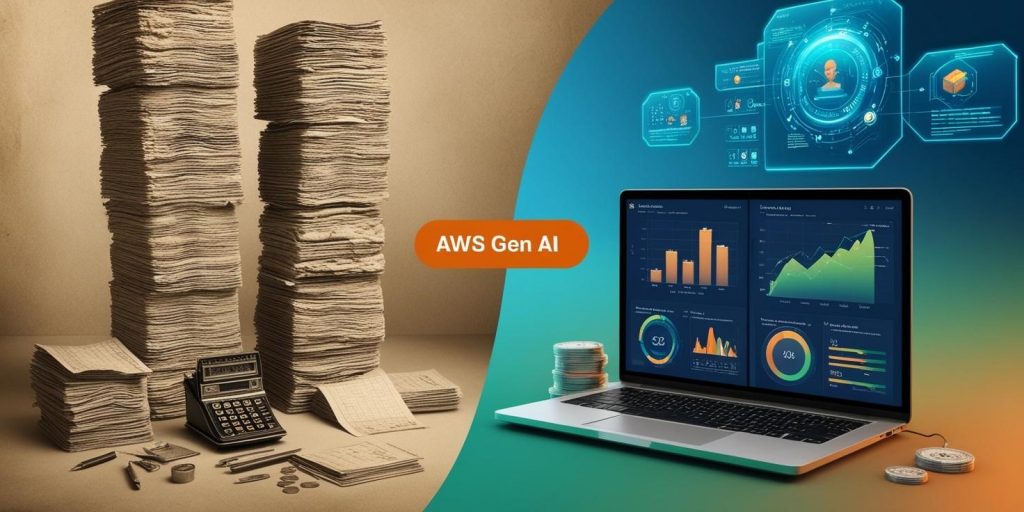In today’s fast-paced digital landscape, businesses must deliver high-quality software at an unprecedented speed. To achieve this, many organizations are adopting a DevOps approach that combines Continuous Integration/Continuous Deployment (CI/CD), Infrastructure as Code (IaC), and automation. This article will explore how these components work together to create a seamless DevOps pipeline, enhancing the efficiency and reliability of software delivery. We will also discuss strategies for implementing these practices, including considerations for rehosting, refactoring, and rearchitecting your applications.
Understanding the DevOps Pipeline
The DevOps pipeline is a series of automated processes that facilitate the development, testing, and deployment of software. It aims to bridge the gap between development and operations, ensuring that teams can collaborate effectively. A well-structured pipeline includes several key components: CI/CD, IaC, and automated testing and monitoring.
Continuous Integration/Continuous Deployment (CI/CD)
CI/CD is a set of practices that automate the integration of code changes and their deployment to production. Continuous Integration involves developers frequently committing code to a shared repository, where automated builds and tests verify the integrity of these changes. Continuous Deployment takes this further by automatically deploying successful code changes to production without human intervention. This process significantly reduces the time it takes to deliver new features and fixes, allowing businesses to respond quickly to customer needs.
Infrastructure as Code (IaC)
Infrastructure as Code is a practice that allows developers to manage and provision computing infrastructure through machine-readable definition files. With IaC, infrastructure can be deployed, scaled, and maintained in a consistent and repeatable manner. This not only speeds up the deployment process but also reduces the risk of configuration errors, making it easier to manage complex environments. Tools like Terraform and AWS CloudFormation are commonly used to implement IaC, enabling teams to treat infrastructure the same way they treat application code.
Automation in Testing and Monitoring
Automation plays a crucial role in testing and monitoring throughout the DevOps pipeline. Automated testing ensures that code changes are thoroughly validated before deployment, reducing the likelihood of errors in production. This can include unit tests, integration tests, and end-to-end tests. Additionally, automated monitoring tools can continuously track application performance and infrastructure health, providing real-time feedback to development and operations teams. This proactive approach helps identify and resolve issues before they impact users.
Strategies for Building a Seamless DevOps Pipeline
To effectively build a DevOps pipeline that leverages CI/CD, IaC, and automation, organizations must consider several key strategies:
1. Conduct a Cloud Readiness Assessment
Before implementing a DevOps pipeline, it is essential to perform a Cloud Readiness Assessment. This assessment evaluates your organization’s current capabilities and identifies any gaps in your cloud strategy. By understanding your strengths and weaknesses, you can develop a tailored plan that addresses your specific needs and compliance requirements.
2. Develop a Comprehensive Cloud Strategy
A robust Cloud Strategy Development plan is crucial for guiding your DevOps initiatives. This plan should outline your goals, the tools you will use, and the roles and responsibilities of your team members. It should also address any legacy applications that may need to be migrated or refactored. A well-defined strategy ensures that everyone is aligned and working towards common objectives, ultimately leading to cost savings and improved business outcomes.
3. Create a Cloud Roadmap
A Cloud Roadmap Planning document serves as a detailed guide for implementing your DevOps pipeline. This roadmap should include milestones, timelines, and key performance indicators (KPIs) to measure progress. By breaking down the implementation process into manageable steps, your team can stay focused and accountable. Additionally, regular reviews of the roadmap will allow you to adapt to any changes in your organization’s goals or market conditions.
4. Choose the Right Approach: Rehosting, Refactoring, or Rearchitecting
When migrating applications to the cloud, organizations must decide whether to rehost, refactor, or rearchitect their applications.
This approach involves transferring applications to the cloud with minimal changes, making it one of the fastest options for migration. It offers immediate advantages like cost savings and improved performance but may not fully exploit cloud-native features.
- This strategy focuses on modifying application code to better align with the cloud environment. It could involve breaking down monolithic applications into microservices, enhancing flexibility and scalability. It strikes a balance between quick migration and long-term optimization.
- This strategy requires a complete overhaul of applications to fully utilize cloud capabilities. It often includes adopting modern architectures such as microservices or serverless computing. Although it requires a significant investment of time and resources, this approach delivers substantial gains in performance, scalability, and resilience.
Explore Our Cloud Services at a Glance
Connecting You to the Cloud Effortlessly!
Real-World Case Studies
Many organizations have successfully implemented DevOps pipelines by combining CI/CD, IaC, and automation. Here are a couple of examples:
Example 1: Target
Target has embraced DevOps practices to improve its software delivery processes. By implementing CI/CD pipelines, the company can deploy new features and updates multiple times a day. Target uses IaC to manage its cloud infrastructure, ensuring consistency and scalability. As a result, the company has significantly reduced deployment times and improved collaboration between development and operations teams.
Example 2: Capital One
Capital One has leveraged DevOps practices to transform its technology landscape. The company uses CI/CD to automate software delivery, enabling teams to release code rapidly and reliably. With IaC, Capital One can provision and manage its cloud resources efficiently. This comprehensive approach has allowed Capital One to enhance its application performance and deliver value to customers more quickly.
FAQs
1. What is a DevOps pipeline?
A DevOps pipeline is a series of automated processes that facilitate the development, testing, and deployment of software. It aims to improve collaboration between development and operations teams.
2. How does CI/CD benefit software delivery?
CI/CD automates the integration and deployment of code changes, reducing deployment times, minimizing errors, and improving collaboration between teams.
3. What is Infrastructure as Code (IaC)?
IaC is a practice that allows developers to manage and provision infrastructure through machine-readable definition files, ensuring consistency and repeatability.
4. Why is a Cloud Readiness Assessment important?
A Cloud Readiness Assessment evaluates your organization’s preparedness for cloud adoption, helping identify gaps in your strategy and ensuring a smooth transition.
Conclusion
Building a seamless DevOps pipeline by combining CI/CD, Infrastructure as Code, and automation is essential for organizations seeking to enhance their software delivery processes. By understanding the components of a DevOps pipeline and implementing effective strategies, businesses can optimize their development workflows, improve collaboration, and respond quickly to market demands. Embracing these practices will not only streamline operations but also empower teams to deliver high-quality software that meets customer expectations.




